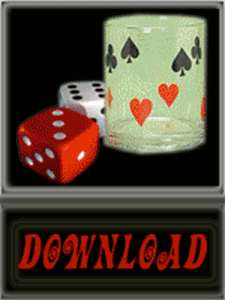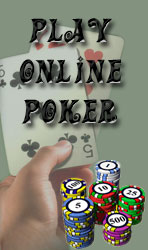Pokerwiner.com → Lessons of poker
Sometimes it may be correct both to bluff and to bet a fair hand for value on the end.
Suppose you are up against one player and decide, before you see your last card, that you will come out betting if you don’t improve. In seven card stud, let’s say on sixth poker street you have.






Notice that in addition to you’re a Q high four-flush you hold a small pair.
When you pick up your last card, you find that you didn’t make the flush, but you don’t have a bad hand either.
You caught another queen and so now have queens up. Should you bet this hand for value?
Many professional players say no.
They contend that if you were so sure you should bluff if you missed, then you should not bet a fair hand for value since you will only be called if your opponent has you beat.
However, both plays may be right, especially if the pot odds is large.
Let’s say there’s an 80 percent chance your queens up are the best hand, and there’s a 30 percent chance your opponent will fold if you bet.
That means that if you bet your queens up for value, 30 percent of the time your opponent will fold and not pay you off. Nevertheless, you are still a 5-to-2 favorite when that player calls your bet.
You will win that extra bet 50 percent of the time, while you will lose it only the 20 percent of the time your opponent has you queens up beat.
Clearly, then, you should bet with your two pair since you have a 5/7 chance of winning if you are called.
On the other hand, if you mess making even two pair, there is still a 30 percent chance your opponent will fold what may be the best hand if you bet.
Therefore, a bluff will also be profitable in the long run, so long as your bet is less than 3.7 of the pot. A similar situation comes up in holdem when I am heads-up against a good player.
I raise before the flop in last position, and my opponent calls. The flop comes something like:



My opponent checks. I check. He now suspects I have A, K; A, Q; or K, Q; and he is right.
He is ready to call with any pair if a high casino card doesn’t come, but if one does, he will consider folding.
I know all this. Therefore, I am going to bet when an ace, king, or queen comes, even though only two of those cards pair me.
My opponent should call me often enough with the worst hand to make a value bet correct, yet I suspect he will fold with enough frequency to make a bluff profitable too.



